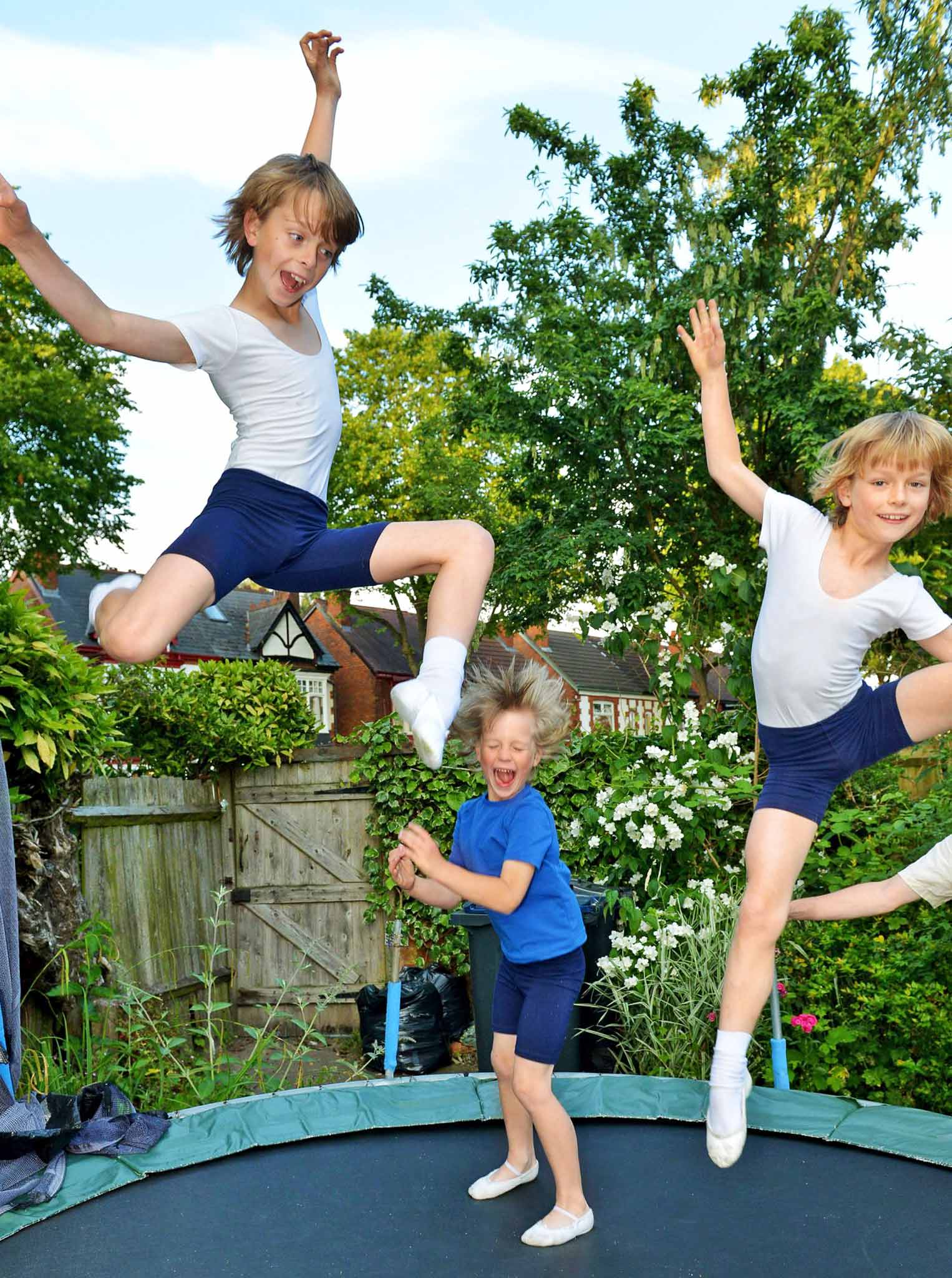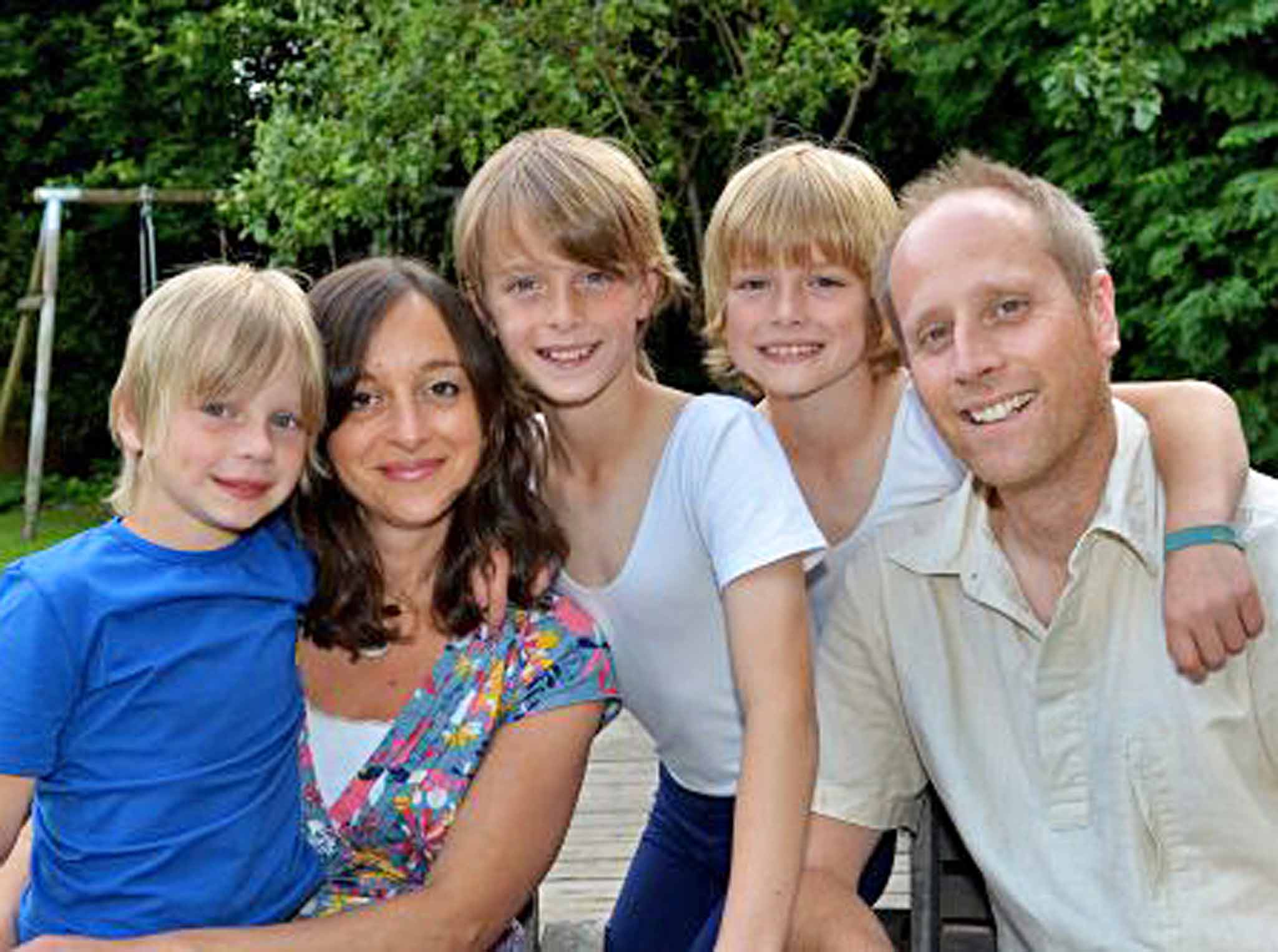Our band of Billy Elliots: Why our boys do ballet
With three sons, the Kempsey-Faggs might not have imagined that dance would feature in their family life. But all of them have been talent-spotted and selected for elite training. And there’s nothing girly about it, they tell Jenny Hudson

It started with a letter that Oscar Kempsey-Fagg brought home from school. He had been spotted during a school workshop run by Birmingham Royal Ballet and was invited to attend an audition. His parents were intrigued. “Ballet wasn’t on our radar,” recalls Oscar’s father, Joe. “Although we wouldn’t have been consciously against it, we wouldn’t have really thought of taking the boys to ballet lessons.”
Each year, Birmingham Royal Ballet (BRB) runs workshops in schools across the city with more than 1,500 children aged five and six. Approximately 200 are invited to audition, with around 60 being offered free, professional ballet tuition on a programme called Dance Track, which aims to identify children with potential to become dancers. At least half of those chosen will be boys. Oscar was selected and subsequently so, too, were his two younger brothers. Now, despite having no previous links with ballet, Jane and Joe Kempsey-Fagg have a whole family of ballet-dancing sons and dance has a central place in family life, opening up new possibilities for the boys.
While ballet classes are a routine part of childhood for many girls, boys can find the classes off-putting. “Often, in ballet classes for that age group, the class will be full of girls and the activities geared around them, such as running around being fairies,” says Rachel Hester, a Dance Track teacher. “The boys don’t want that and you’ll lose them. We made a conscious decision to have white shoes and blue tops on Dance Track. There is no pink.
“At first, I don’t use the word ‘ballet’ – I talk about dance and movement and challenge them to see who can jump the highest and furthest. I give out gold medals because boys like that competitive element.”

After his first year with Dance Track, Oscar was selected to join a smaller group for another year then, at the age of eight, won a place on the prestigious Royal Ballet Junior Associate scheme, a three year elite training programme for eight- to 11-year-olds with the potential to become professional dancers. At the same time, it was the turn of Oscar’s younger brother Marlo to take part in a workshop at Colmore Junior and Infant Schools, which the boys attend. He, too, was selected for Dance Track.
“It isn’t unusual for siblings to be selected,” says Rachel. “When we see children at the age of five and six, a lot of what we are looking for in children is the physical facility for dancing. We are looking for natural ankle flexibility, the ability to turn the hips out naturally, very straight legs, co-ordination and, particularly in boys, the ability to jump. The Kempsey-Fagg boys have ‘magic feet’ – they are physically perfect for dance, as well as having great musicality.”
As well as the rounds of lessons, the boys would regularly see performances by BRB and the Royal Ballet, being given free tickets as part of their training schemes. They talk knowledgeably and enthusiastically about whether they prefer classical or modern styles of ballet. If some people express surprise at the place of ballet in a family of boys, their parents feel it all fits perfectly.
“The boys race BMX bikes competitively,” says Joe, an architect, who is 42. “I suppose that might seem to be on the opposite end of the spectrum to ballet, but you can see that their ballet helps them in terms of their balance, strength and stamina. They do all the ‘boys stuff’ – they are out in the garden, making ramps for their bikes and climbing, then they will go on the trampoline and practice their ballet. It’s all part of the mix.”
Not surprisingly, many of the boys who are selected for Dance Track also excel at sport. Several on the ballet programme have also been selected for academies run by professional football clubs. “You imagine that if ballet is up against football on a boy’s schedule, it might seem inevitable which one they will choose,” says Rachel. “But it’s not always the case. When classes clashed for one boy recently, his mum told me he was desperate to keep up ballet, so his coach allowed him to come to football training late.”
The way that boys see ballet does seem to be changing, fuelling a new interest in participation. In March 2014, the London Boys Ballet School was established by James Anthony. “It was clear that more boys wanted to try ballet, but there was nothing for them,” says James.
“They would be lucky to find a ballet class with just one other boy taking part and the image would be very pink and fairy-like.” Creating boys-only classes, focusing on strength, jumping and athleticism, the number of participants at the new school quickly grew to more than 30 with ages ranging from four to 14.
“Many of the boys want to try ballet after watching a performance – not only Billy Elliot but other musicals featuring dancing, or seeing dance shows on TV,” says James. “There is certainly less stigma around ballet – it is recognised as a foundation for all dance forms and for its athleticism.”
The footballer Rio Ferdinand, who trained in ballet, and the street dance crew Diversity, are influential figures who have praised the benefit of the discipline for boys. And at the highest performance level, Balletboyz, the company formed by former Royal Ballet lead dancers, is shaping the re-branding of ballet from a male perspective.
Equally now, if boys do express an interest in ballet, they are more likely to be supported by their parents. “This generation is different,” says James. “Dads are proud to bring their sons to our ballet classes; there is no sense that ballet is ‘girly’.”
If the Kempsey-Fagg brothers do ever hear occasional comments that ballet is “not something for boys”, it is not off-putting. When considering this, Marlo quickly fires back, saying: “Ballet is awesome.” Beaming with pride, he adds: “I’m the only one in my class who is in it.” Like his older brother, Marlo, now aged nine, won a place on the Royal Ballet’s Junior Associate programme and has just completed his first year. His younger brother Arlie, six, has recently also been selected for Dance Track.
Oscar has just taken a major new step with his ballet, having been awarded a scholarship to attend Elmhurst School for Dance, the internationally renowned associate school for Birmingham Royal Ballet. “I am so proud of them,” says Rachel.
Join our commenting forum
Join thought-provoking conversations, follow other Independent readers and see their replies
Comments
Bookmark popover
Removed from bookmarks